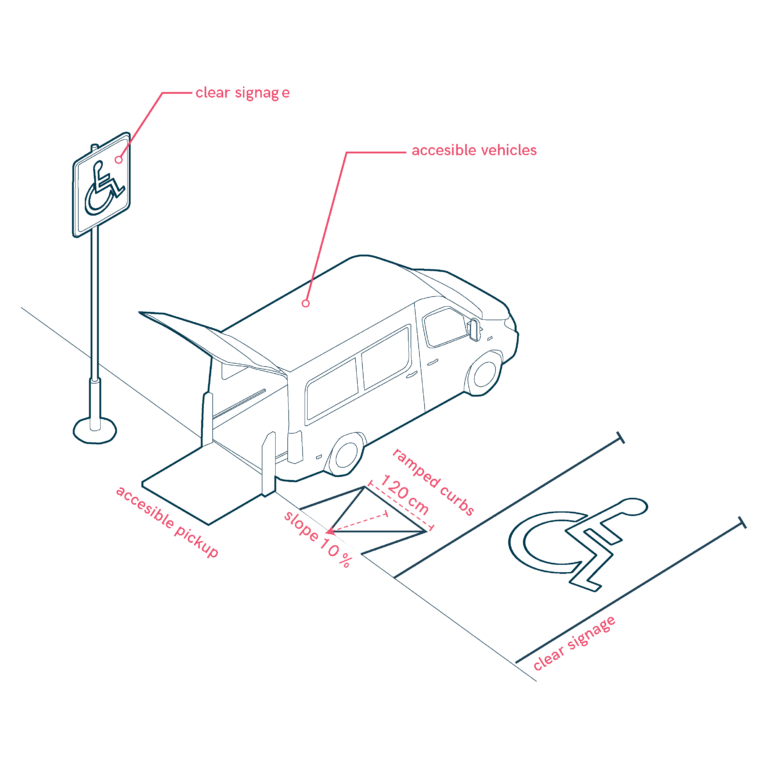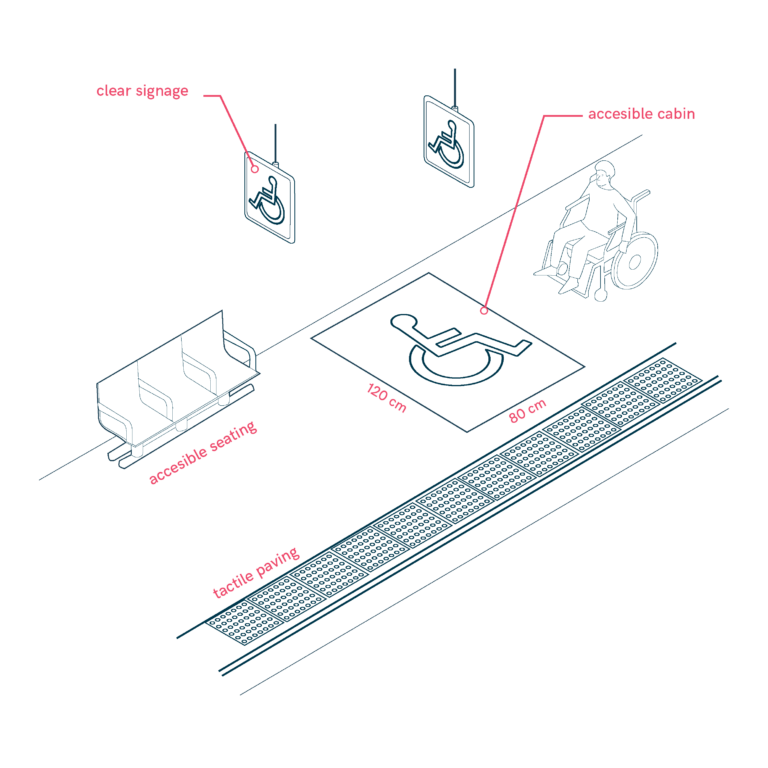
Low-income
Spectrum of abilities
Low-income individuals face multiple challenges that limit their full participation in society. The lack of adequate housing, limited access to public transportation, and the scarcity of functional public spaces hinder their social and economic integration. Additionally, the lack of financial resources restricts access to educational, digital, and health services, among others, perpetuating social inequalities.
Accesibility and inclusion actions
To address these inequalities, it is essential to improve urban infrastructure78 by ensuring decent housing79, accessible and affordable public transportation80, and inclusive public spaces. Furthermore, access to essential public services, such as water, electricity, and heating, must be ensured, especially in emergency situations81. In the digital realm, it is crucial to provide access to appropriate devices82 and the internet, as well as to design inclusive platforms that allow low-income individuals to benefit from educational, health, and other online resources83.
Key beneficiary users
The proposed measures would benefit various profiles of low-income individuals, such as families with young children living in inadequate housing84 and facing difficulties accessing quality health and education services, elderly people with reduced mobility who rely on public transportation for their daily commutes but face barriers due to the lack of accessibility in vehicles and stations. Also, young people seeking employment85 who, despite having digital skills, lack appropriate devices and a stable internet connection, limiting their access to educational and employment opportunities online. Additionally, people with disabilities who require adaptations in both the physical and digital environments to participate fully in society86.


Accessible Dressing Rooms and Showers
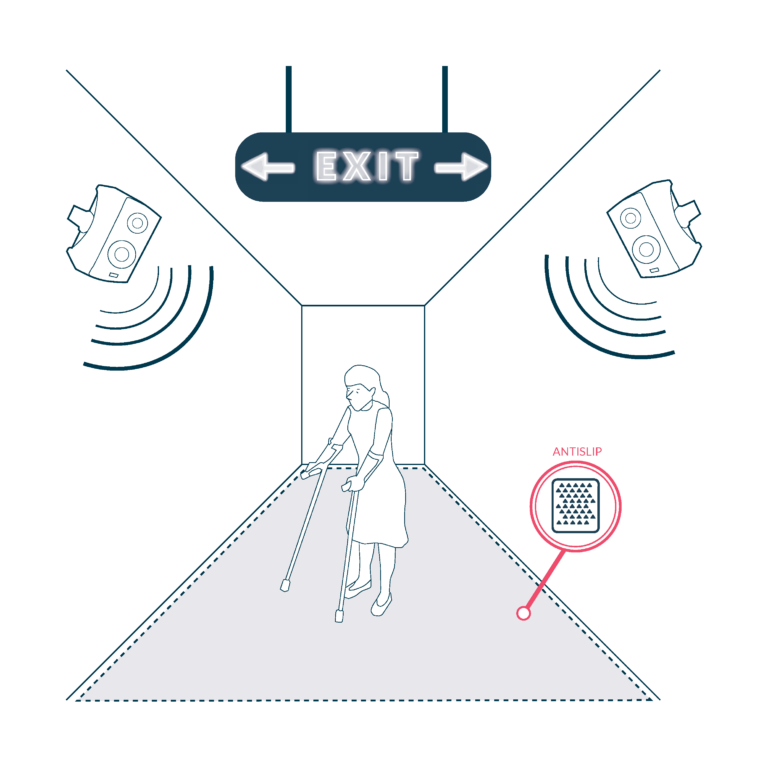
Accessible Gangways for Vessel Access
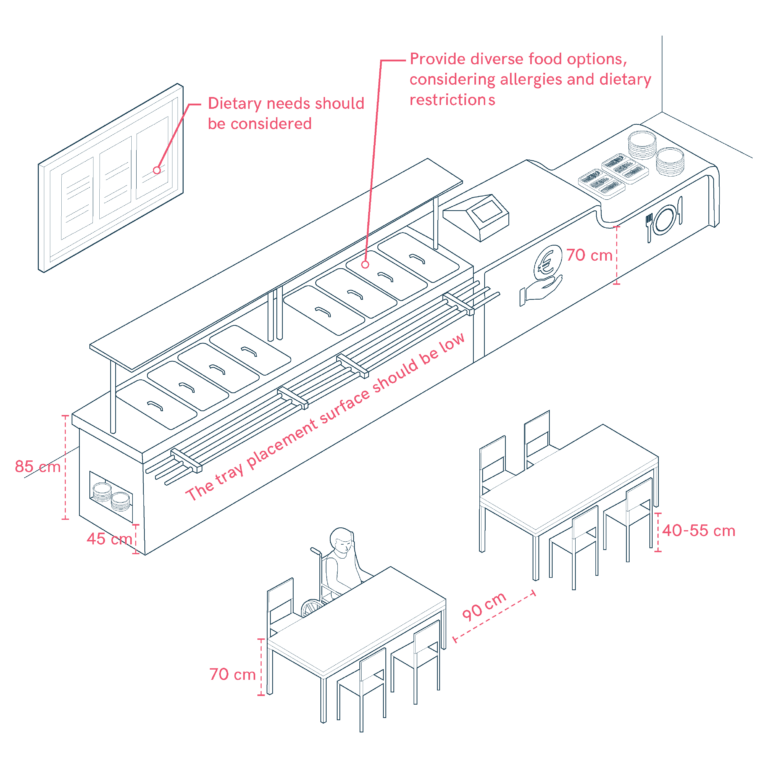
Accessible Lunch Counters and Tables
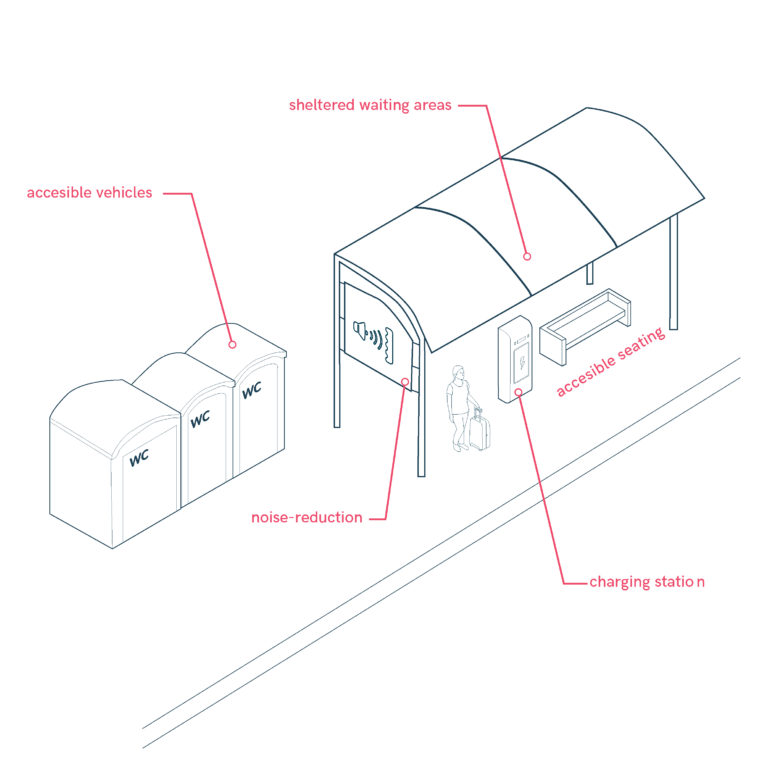
Accessible Waiting Areas and Station Facilities at Mobility Hubs
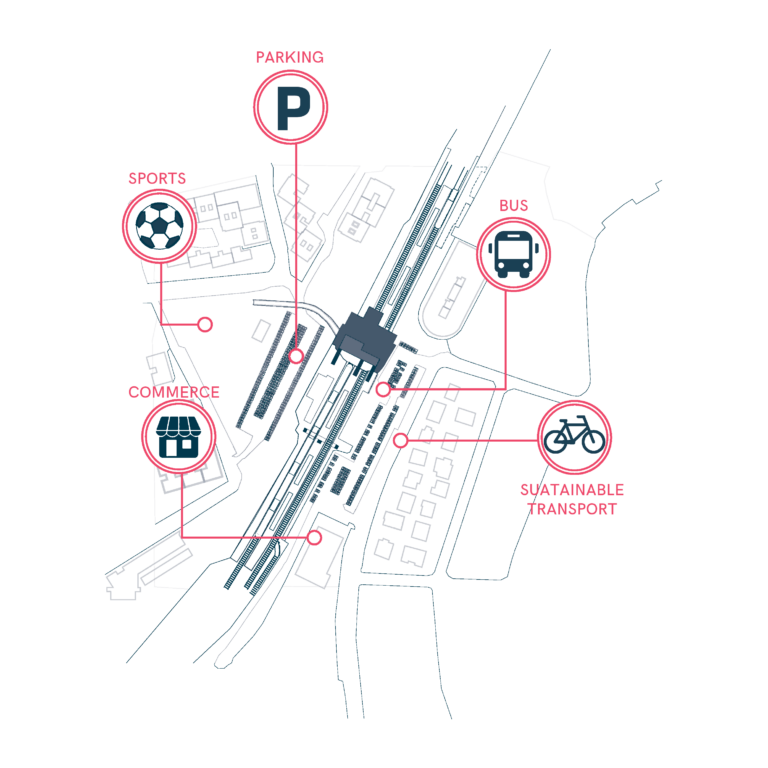
Approach to the station: Welcoming and Accessible Entrances
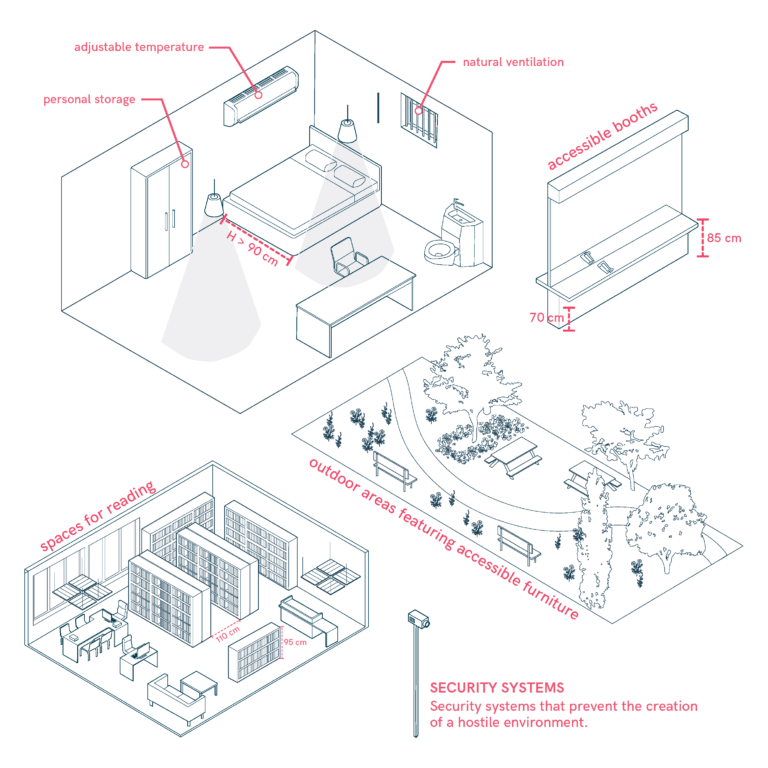
Cells and Detention Spaces
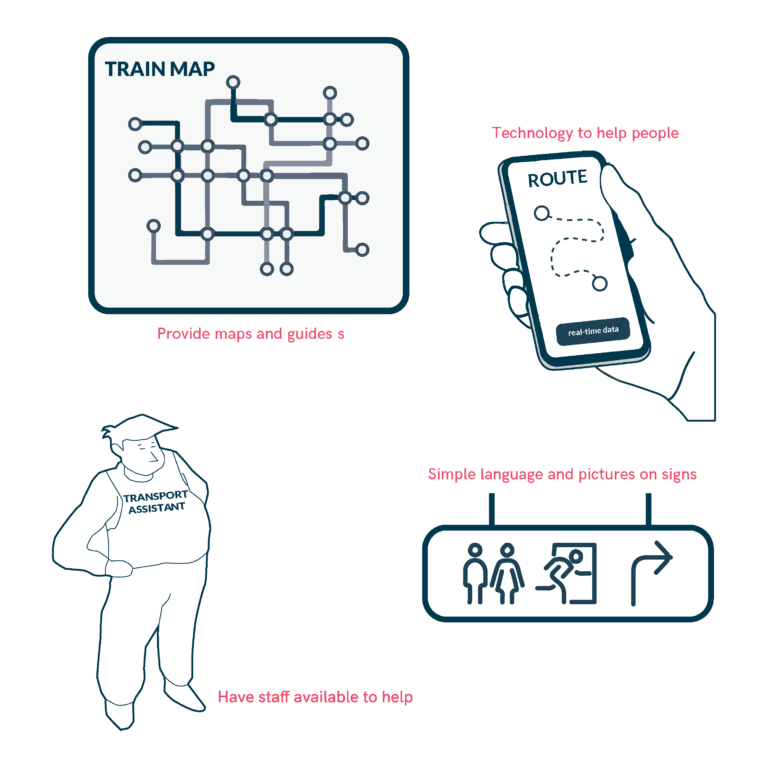
Cognitive-Friendly Design
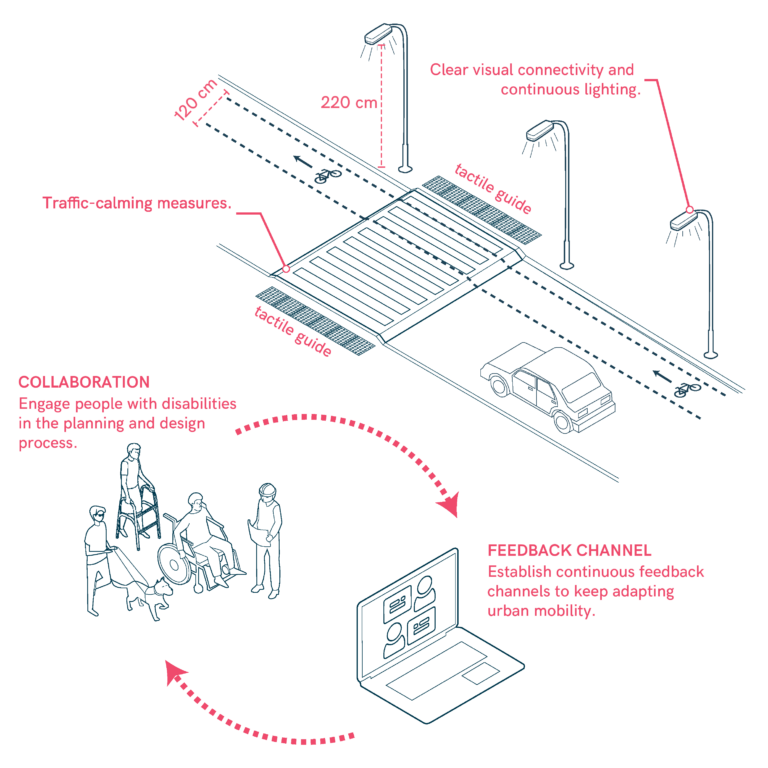
Community Engagement and Feedback
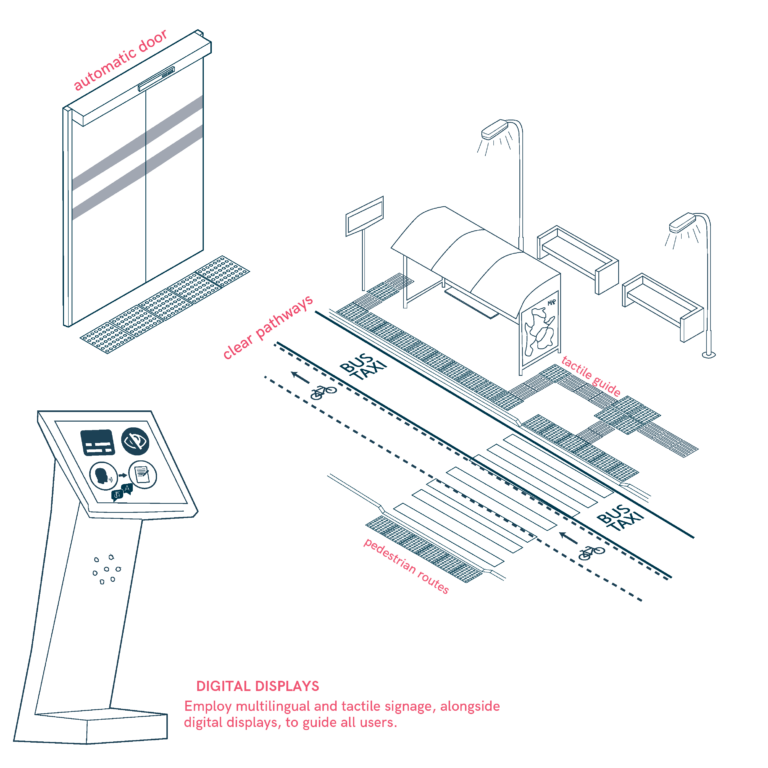
Design for Everyone’s Journey

Design markets from a gender perspective
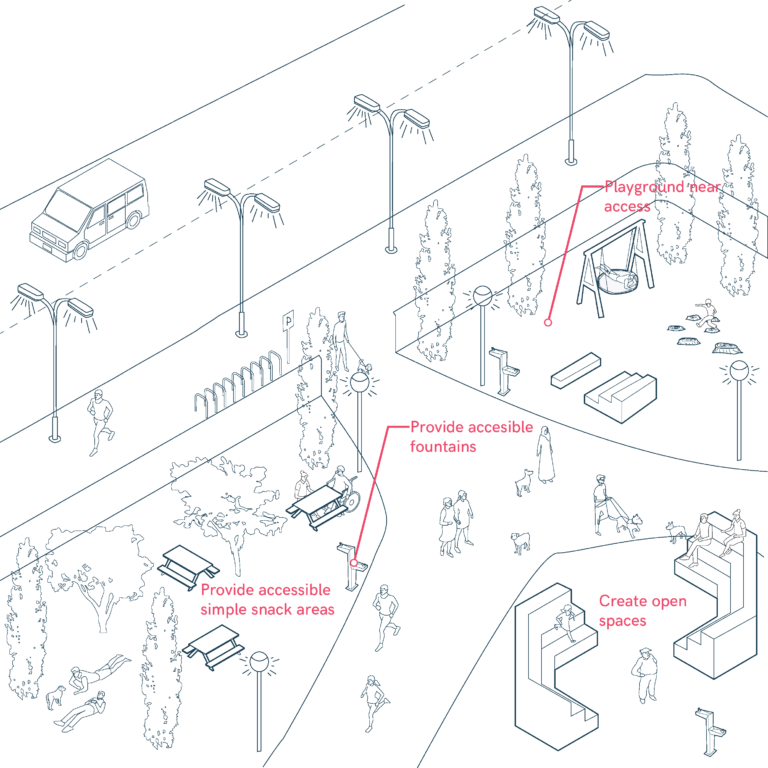
Designing areas that support interaction
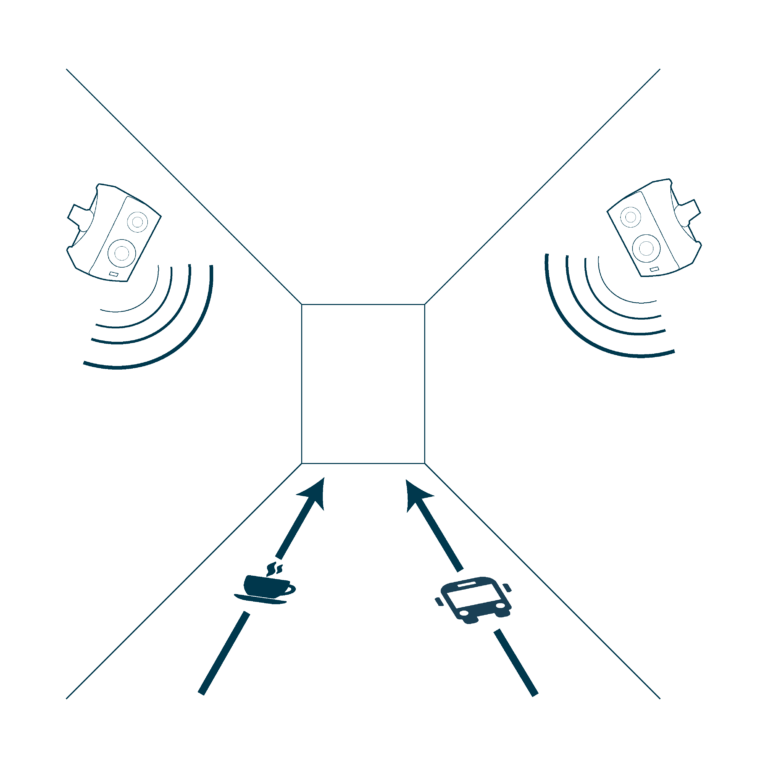
Designing Hallways on Passenger Vessels
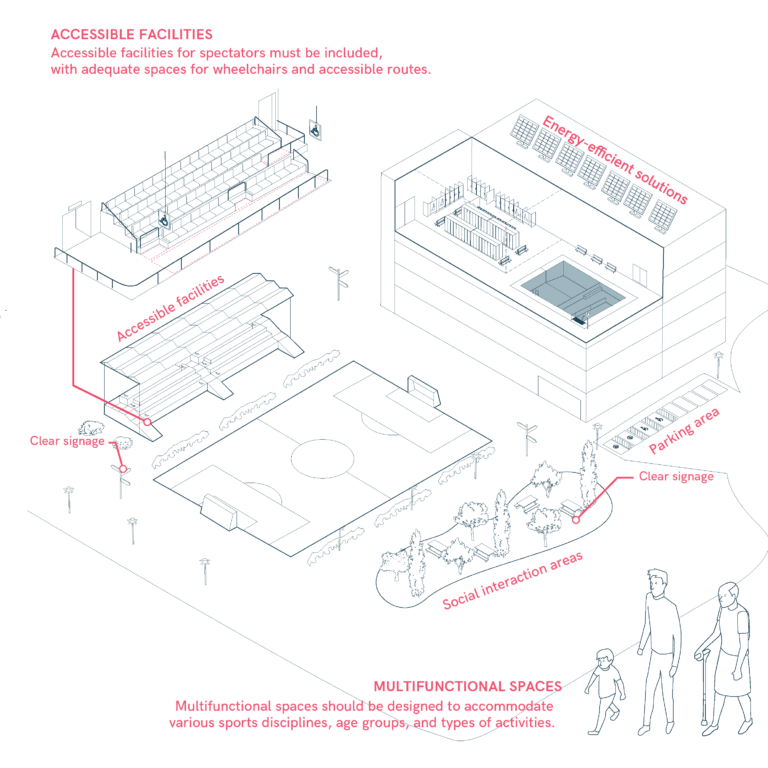
Designing Inclusive Sports Areas
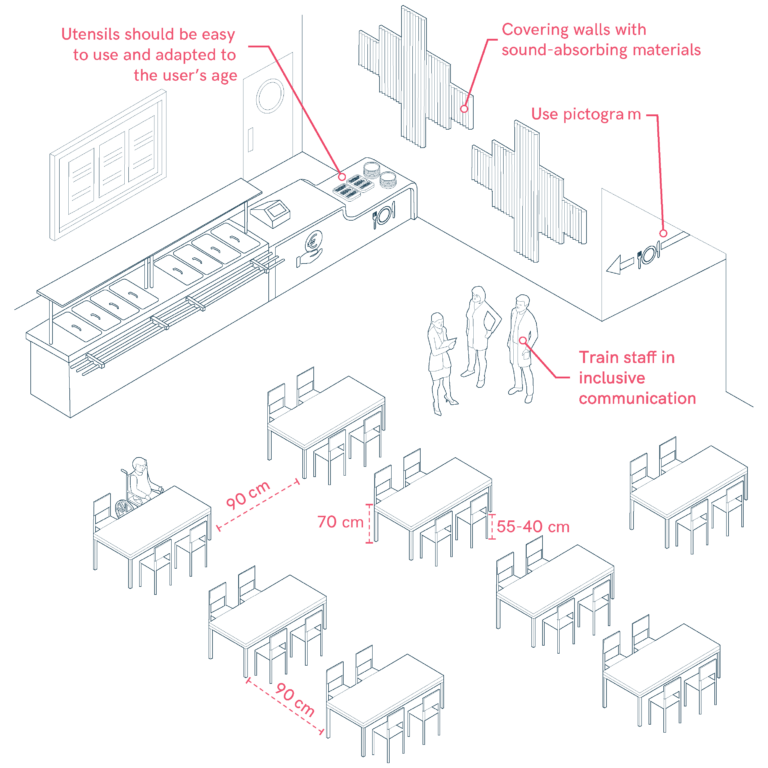
Dining Room in Schools
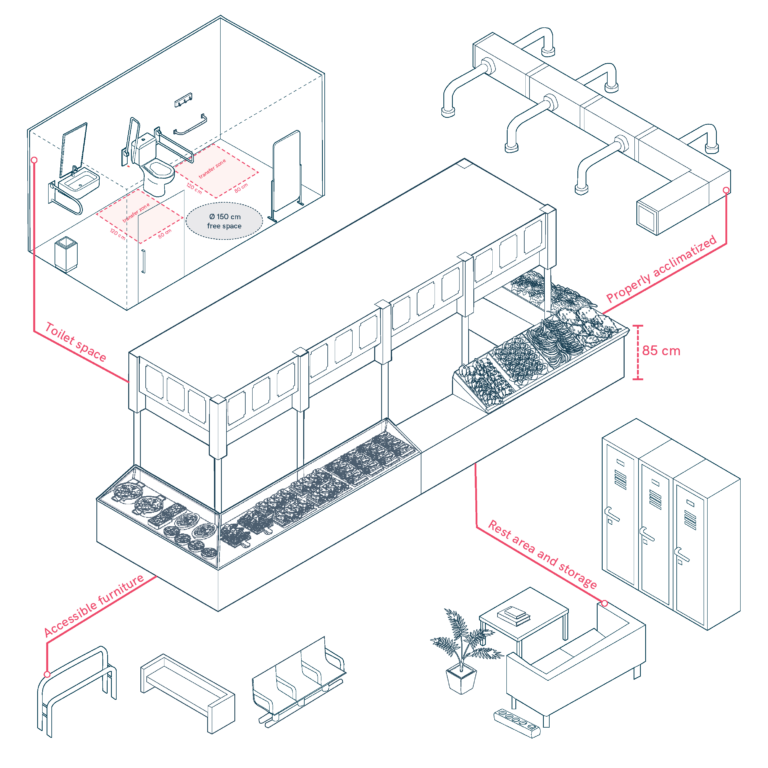
Diverse furniture and Market Stalls
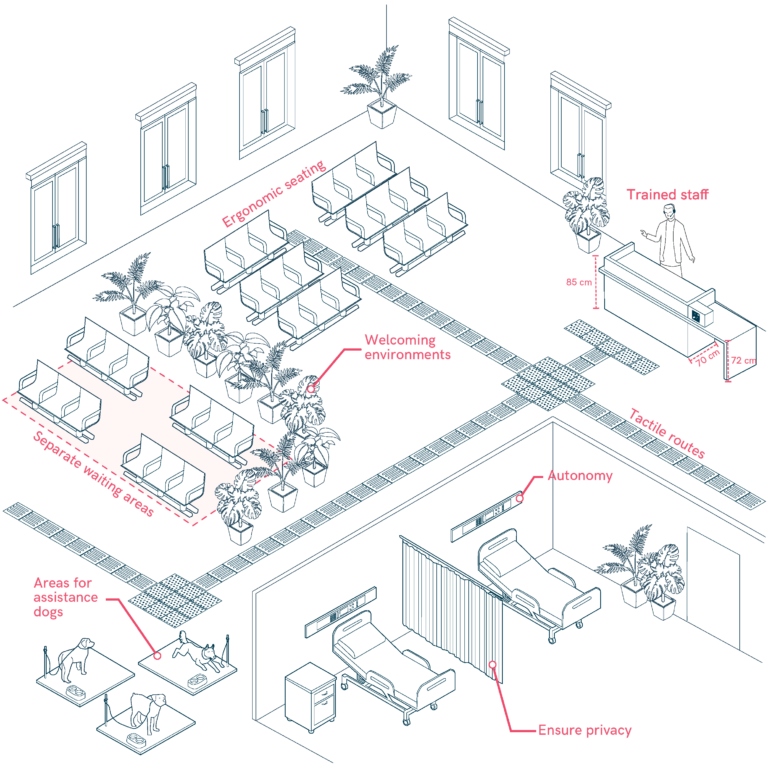
Emotional Accessibility
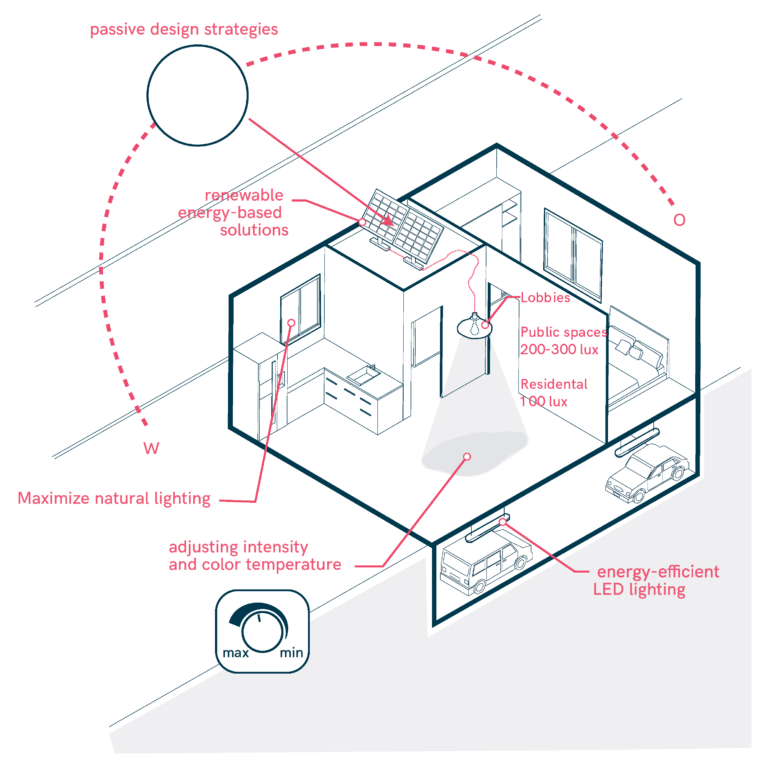
Energy Efficiency

Ensuring Accessibility at Airports

Environmental Sustainability at Mobility Hubs
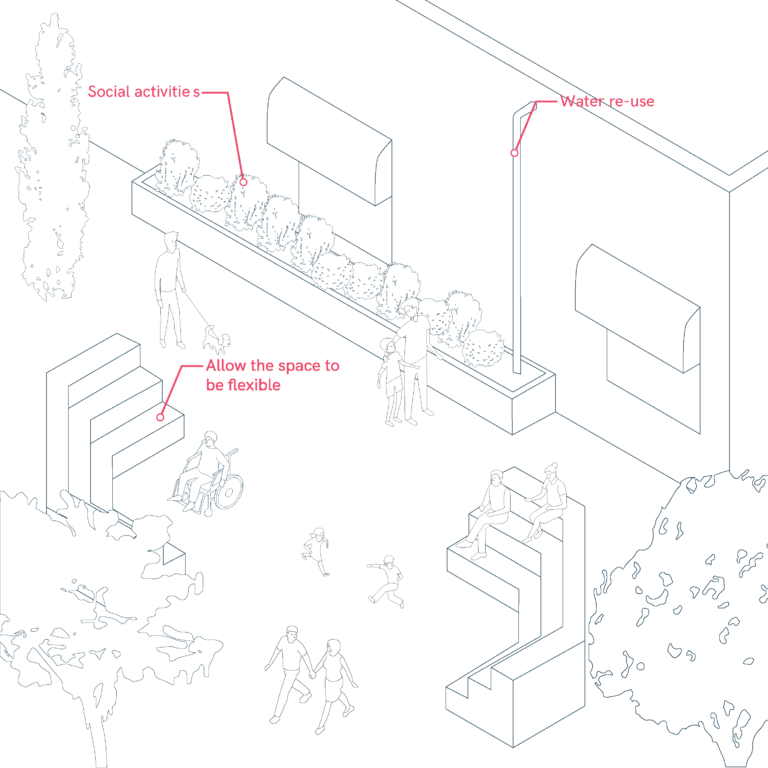
Flexible Use and Community Engagement
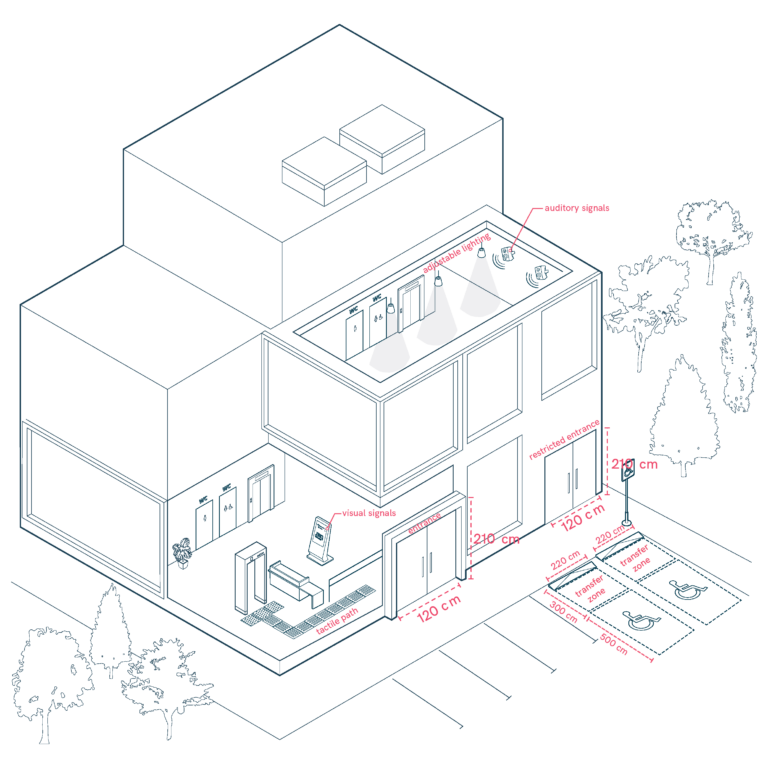
General Aspects of State Buildings
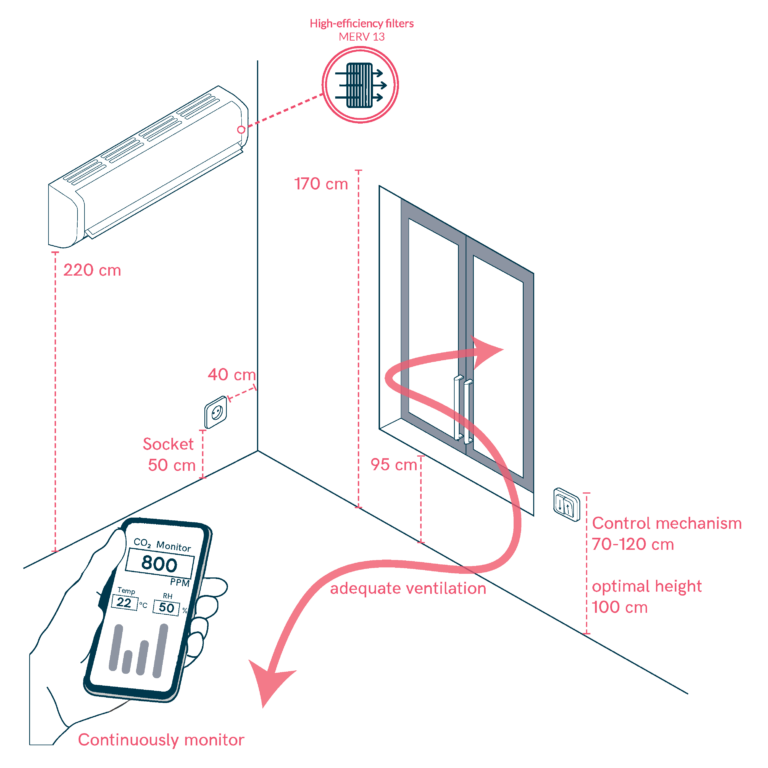
Healthy Indoor Air
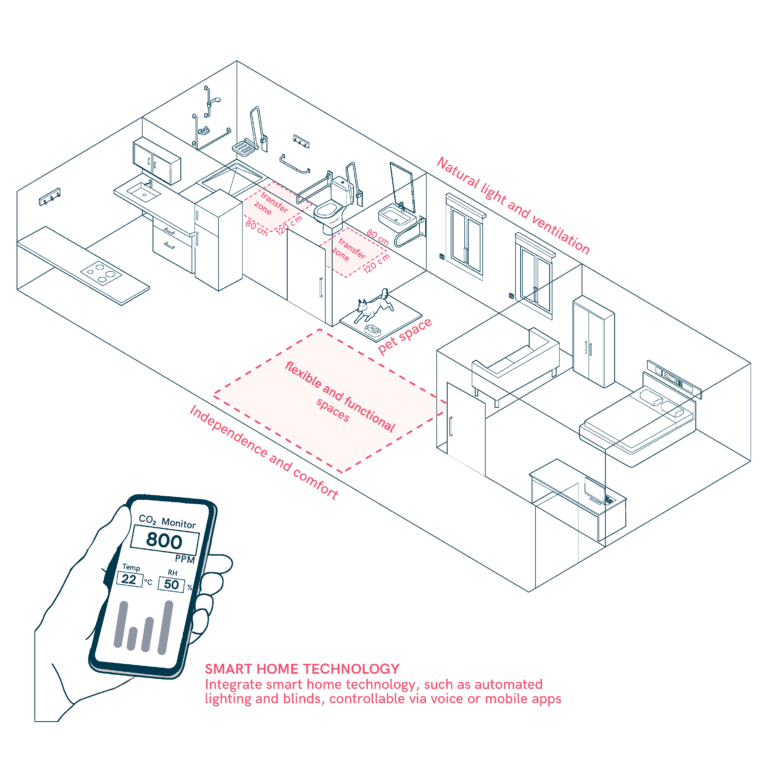
Home
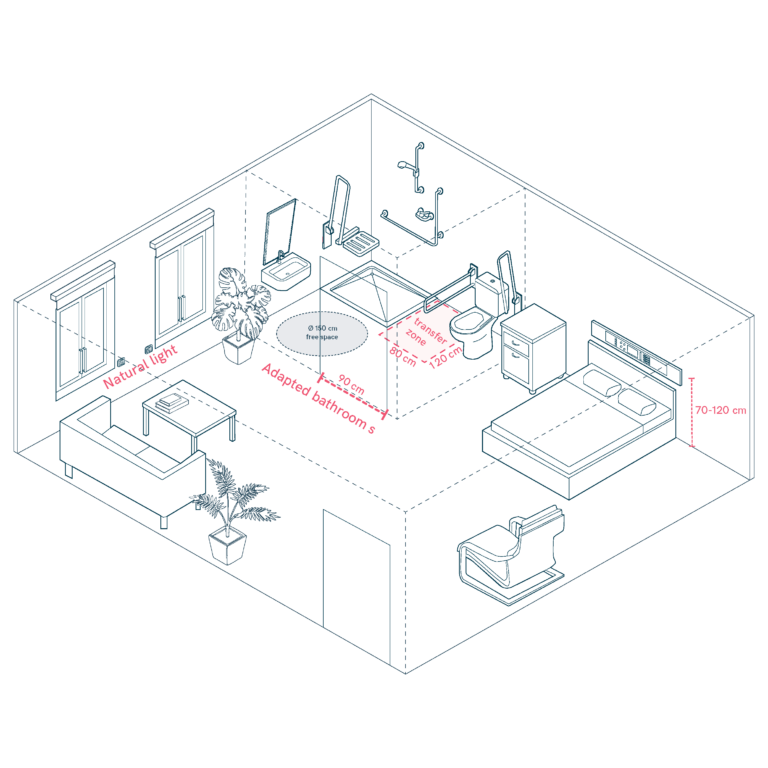
Humanised Patient Rooms
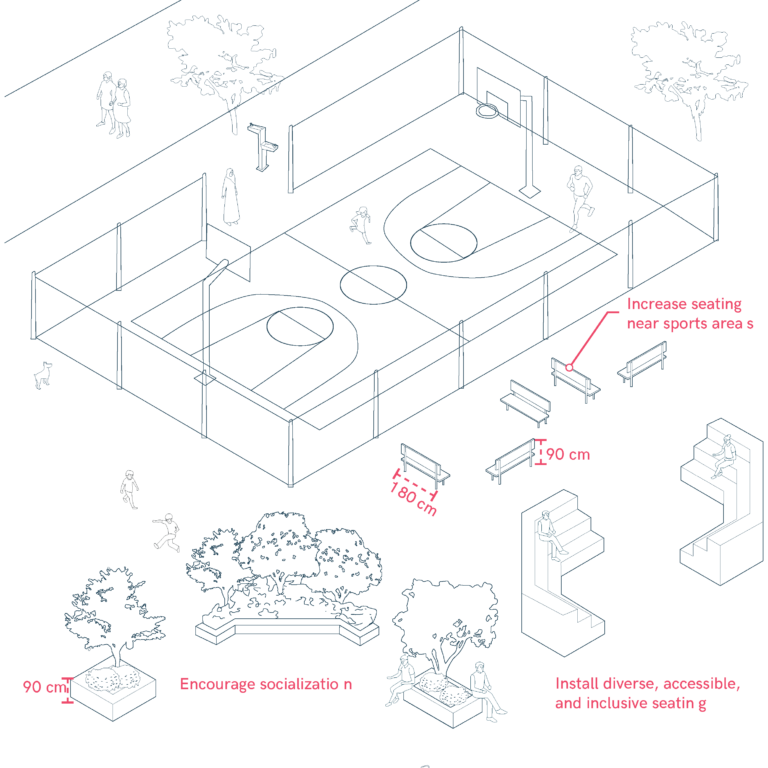
Inclusive and Comfortable Seating
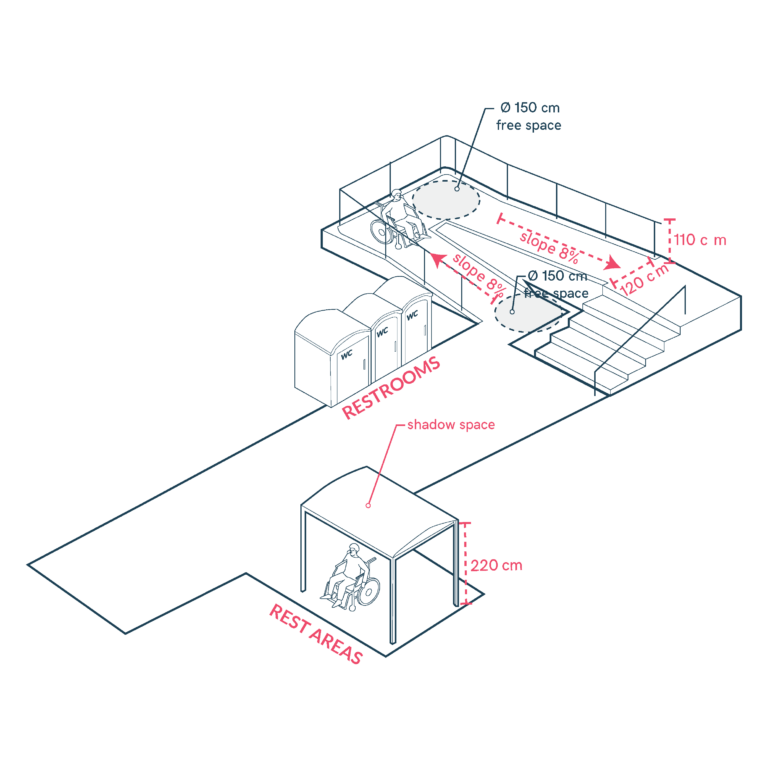
Inclusive Beach Access for All
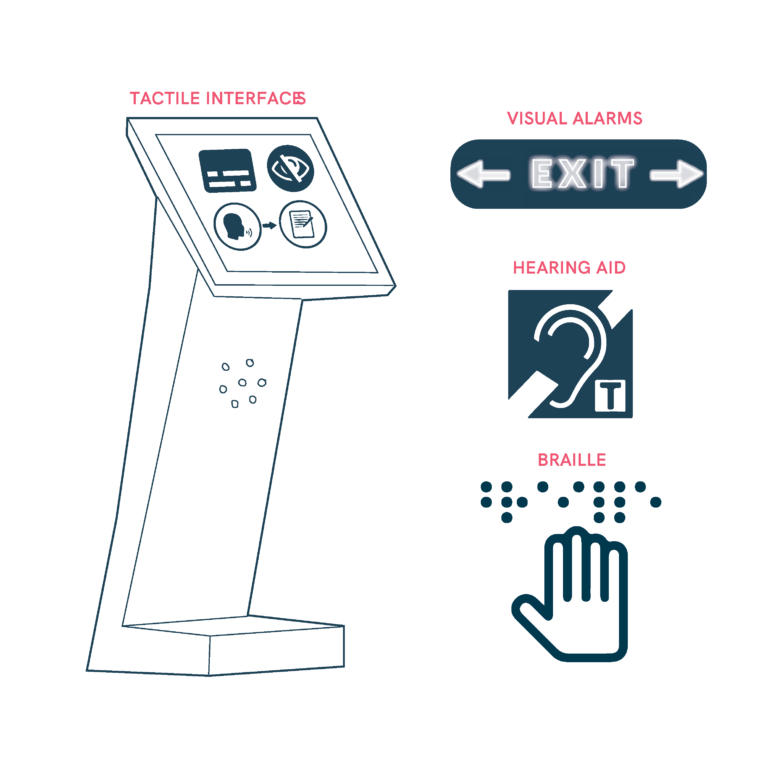
Inclusive Ticketing and Fare Systems at Mobility Hubs
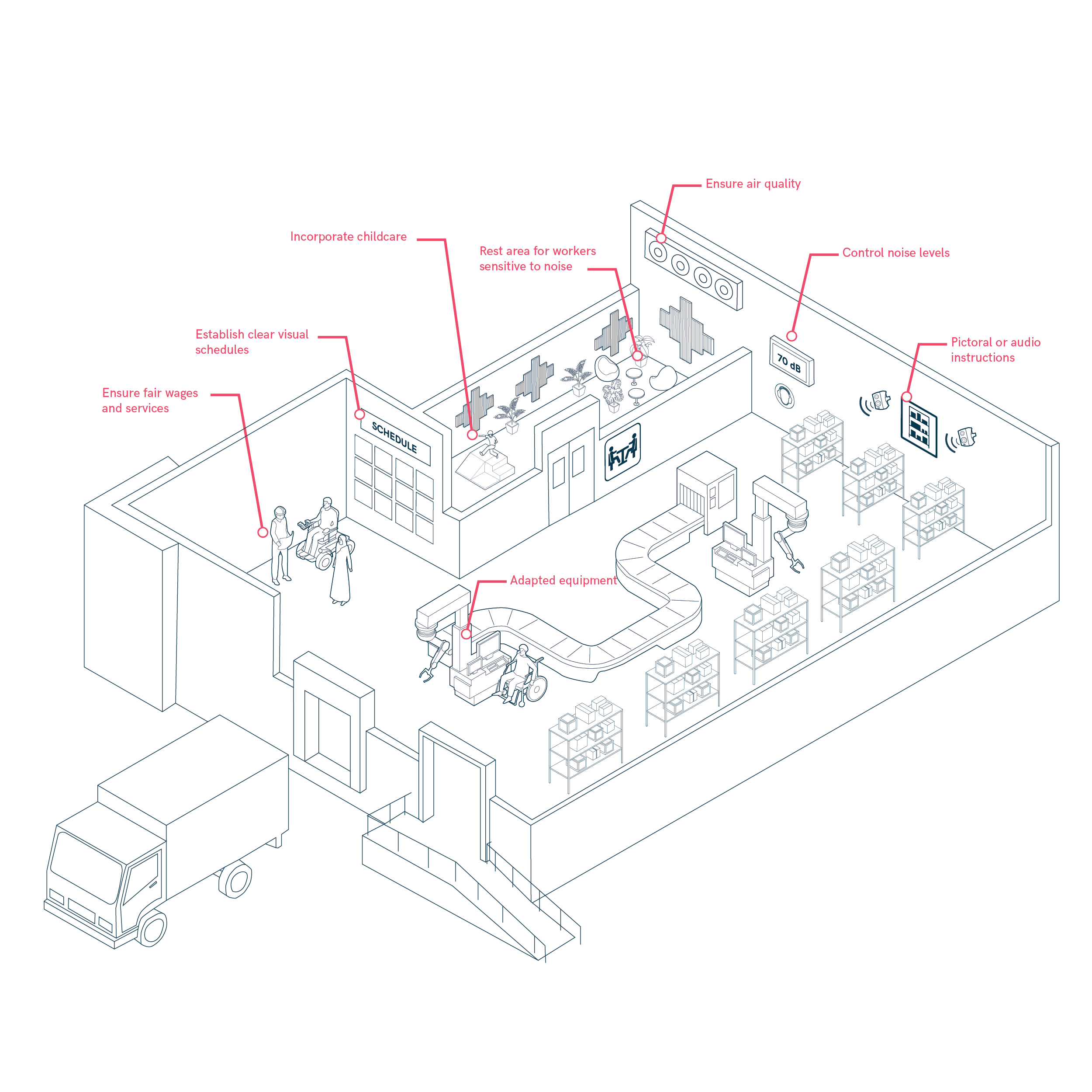
Industrial spaces
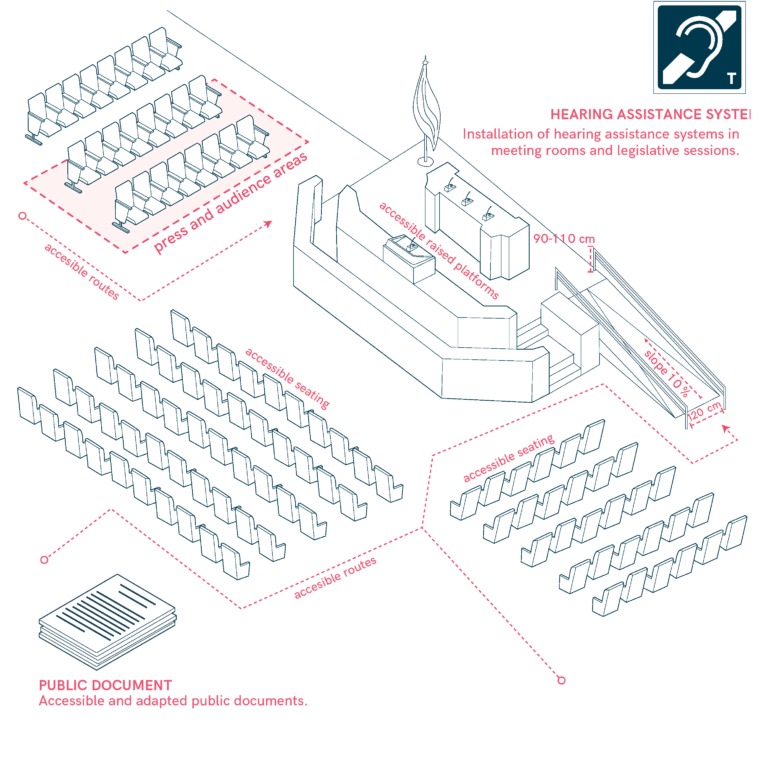
Legislative Buildings
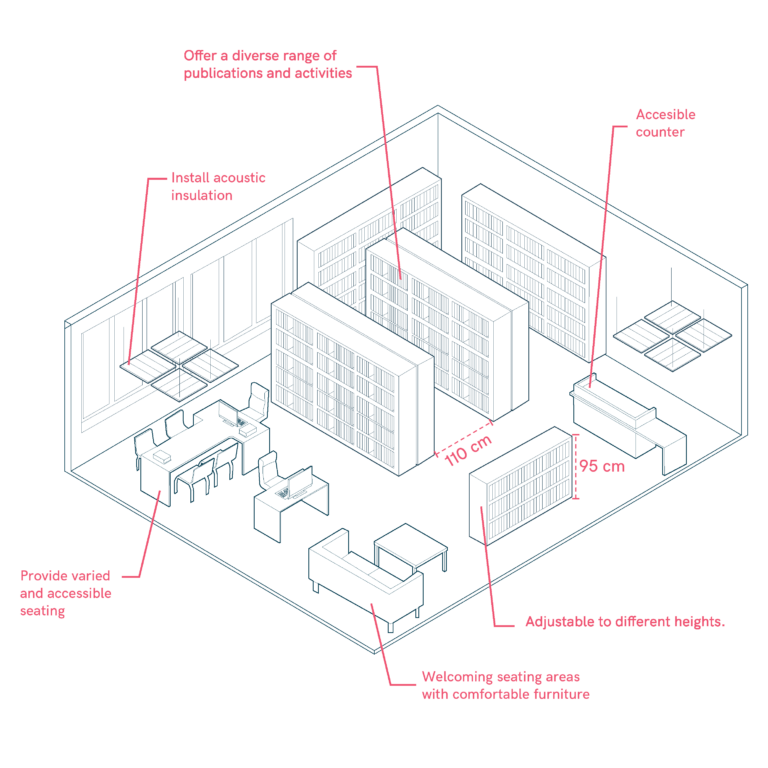
Libraries
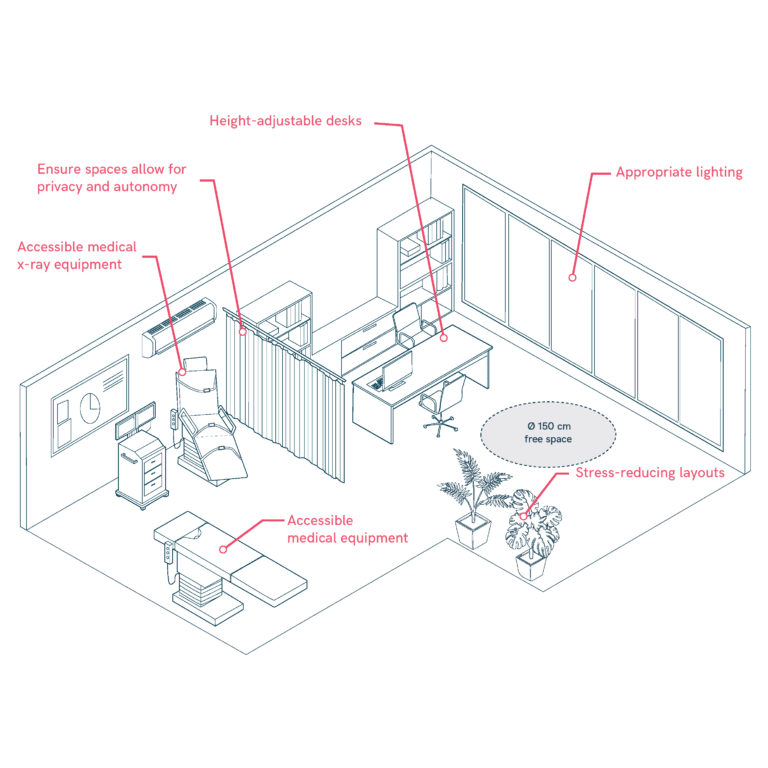
Medical Consultations
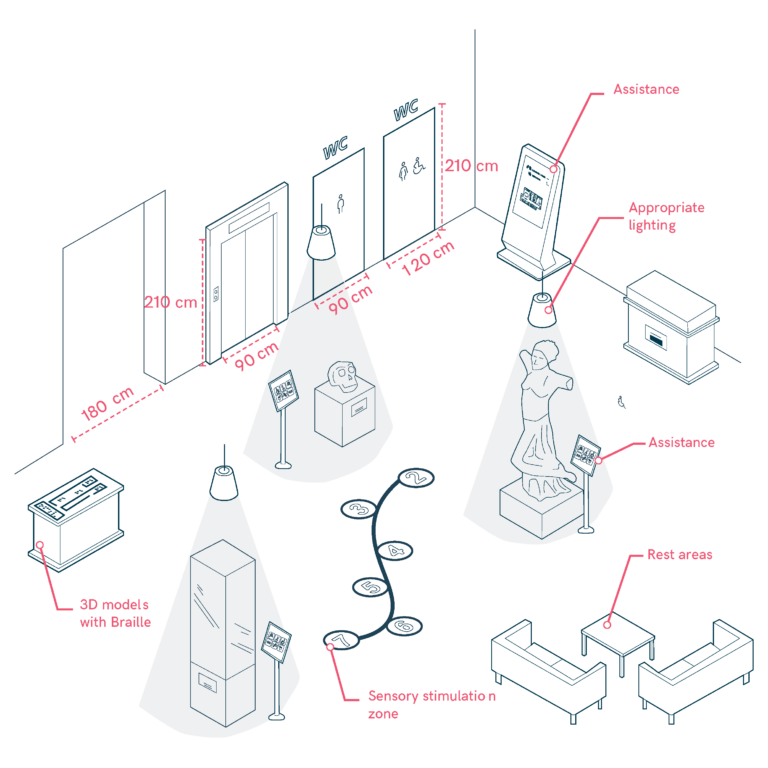
Museums and Heritage Sites
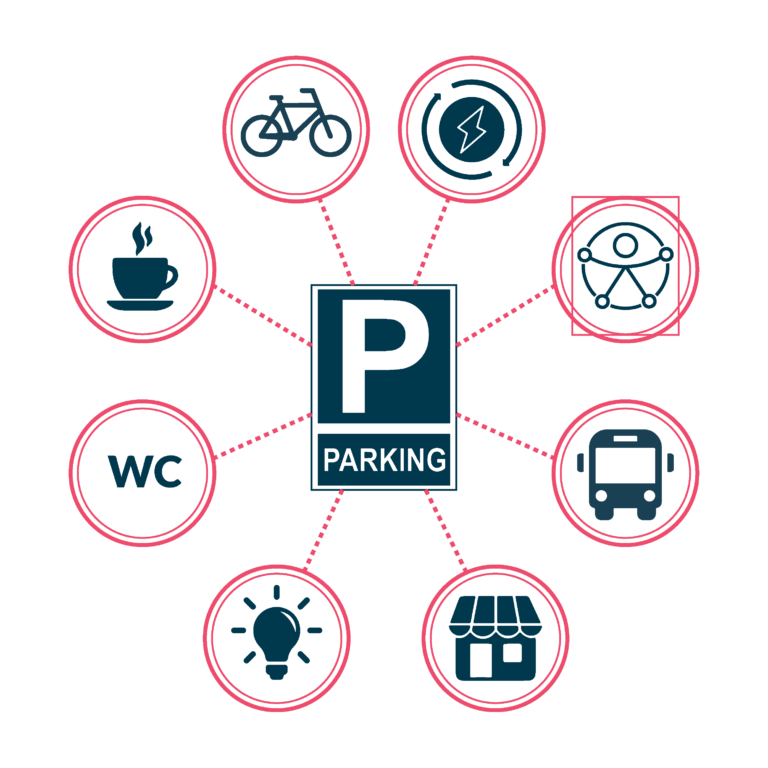
Parking Lot Design for Promoting Public Transport Use
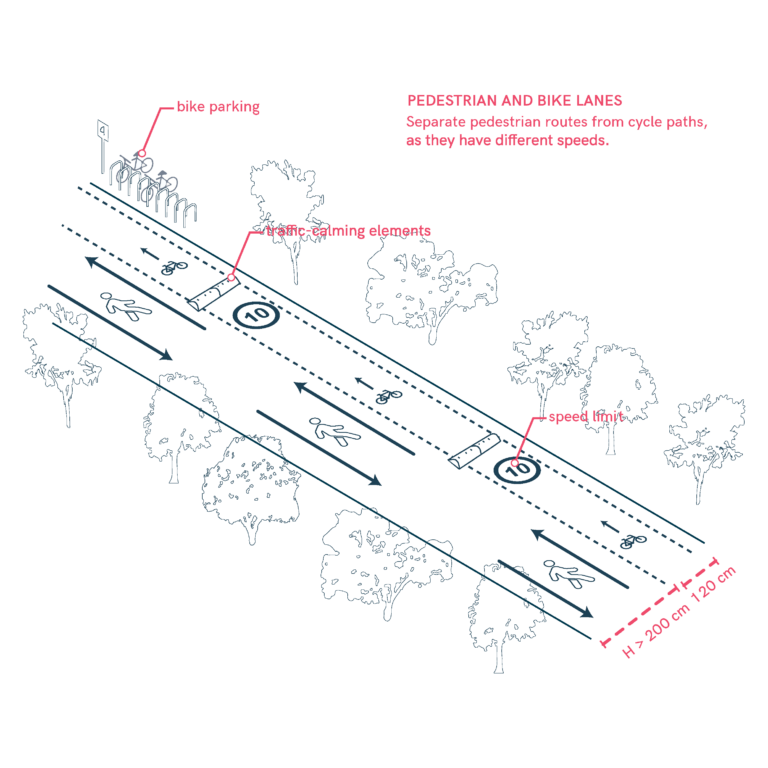
Pedestrian and Bicycle Paths
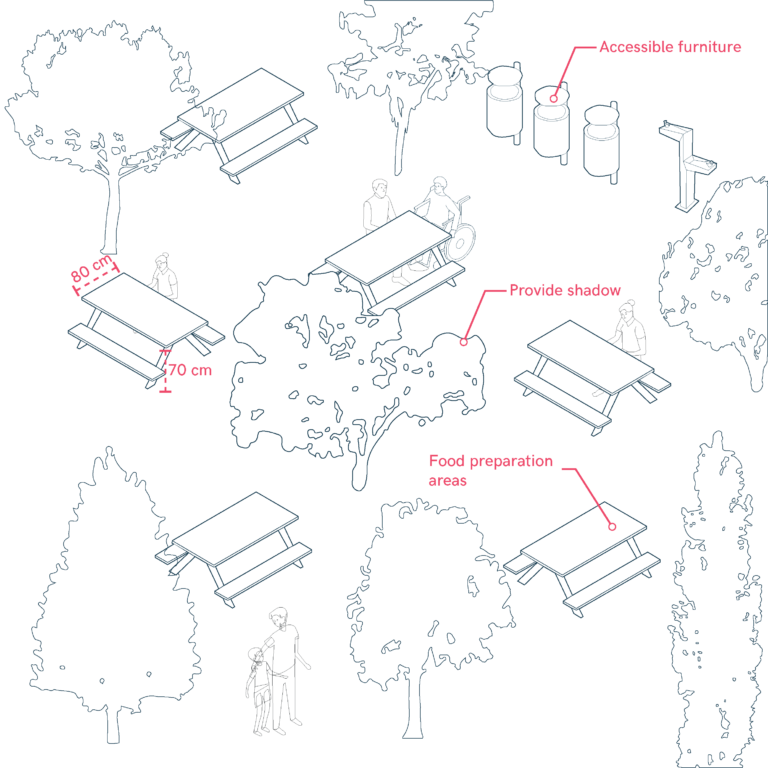
Picnic and Rest Areas
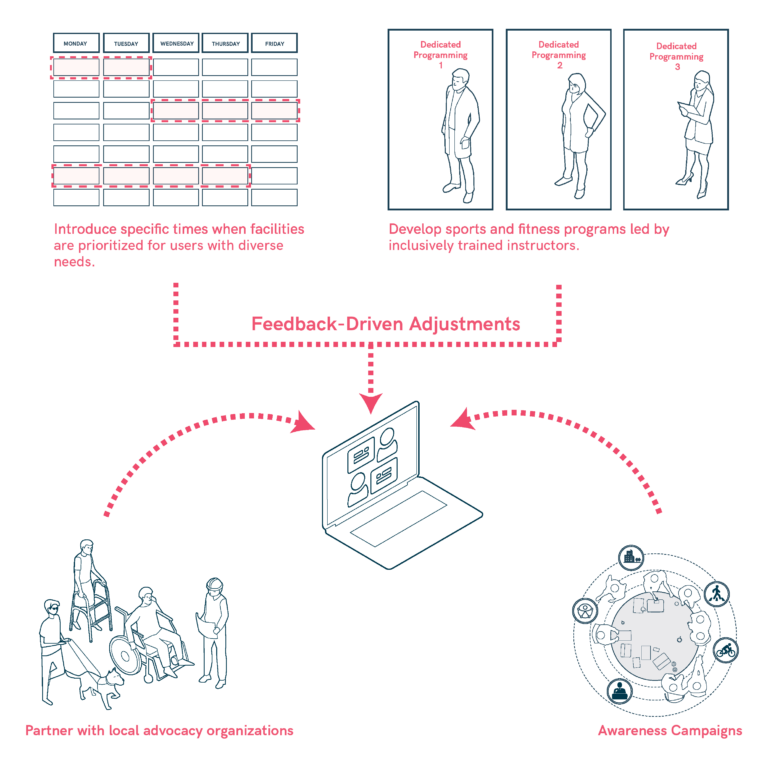
Programming and Pilot Initiatives
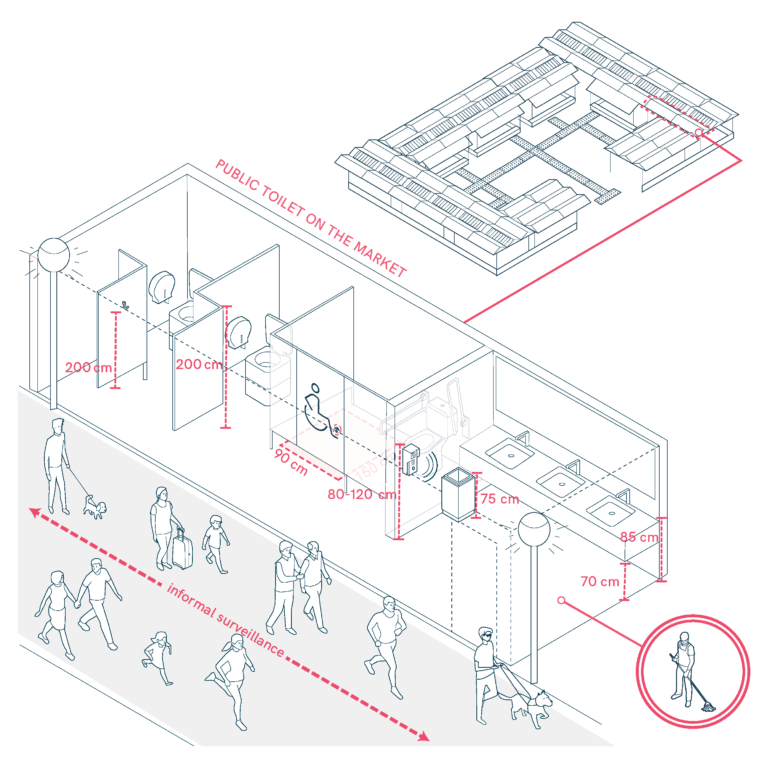
Public toilets on the market
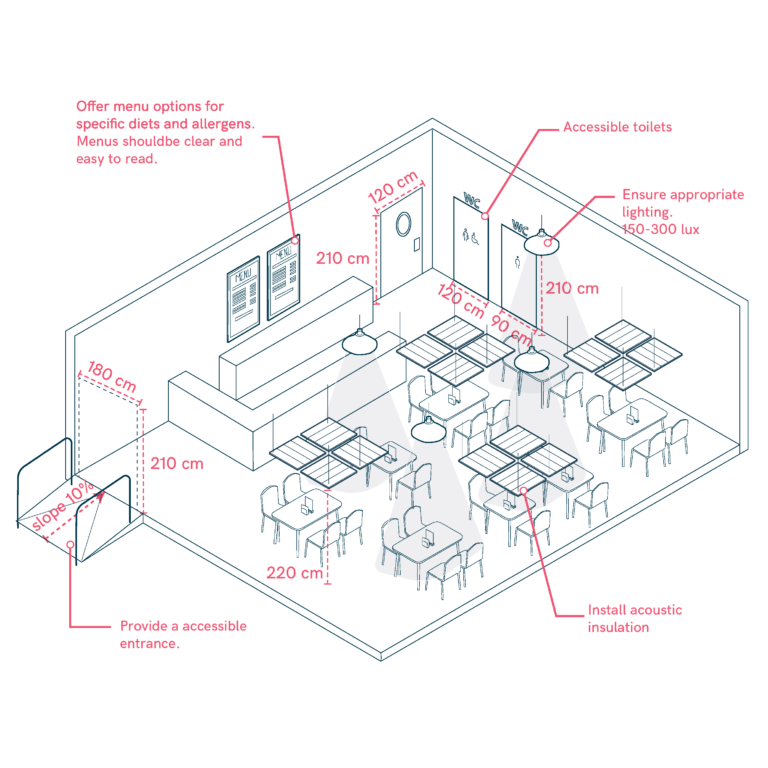
Restaurants, Cafés, and Bars
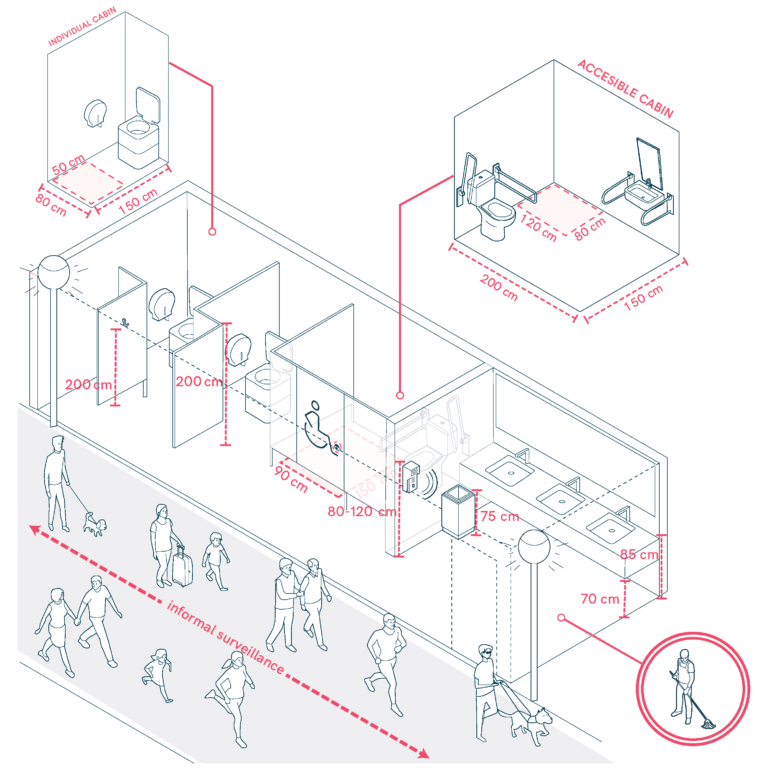
Restrooms in Mobility Hubs
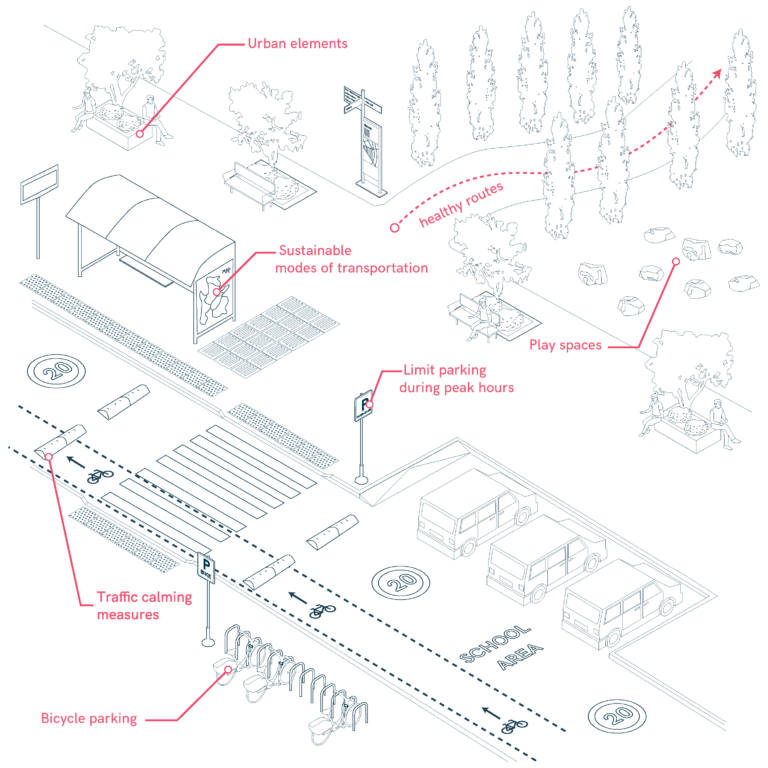
School Pathways

Single Ticket for Multimodal Public Transport
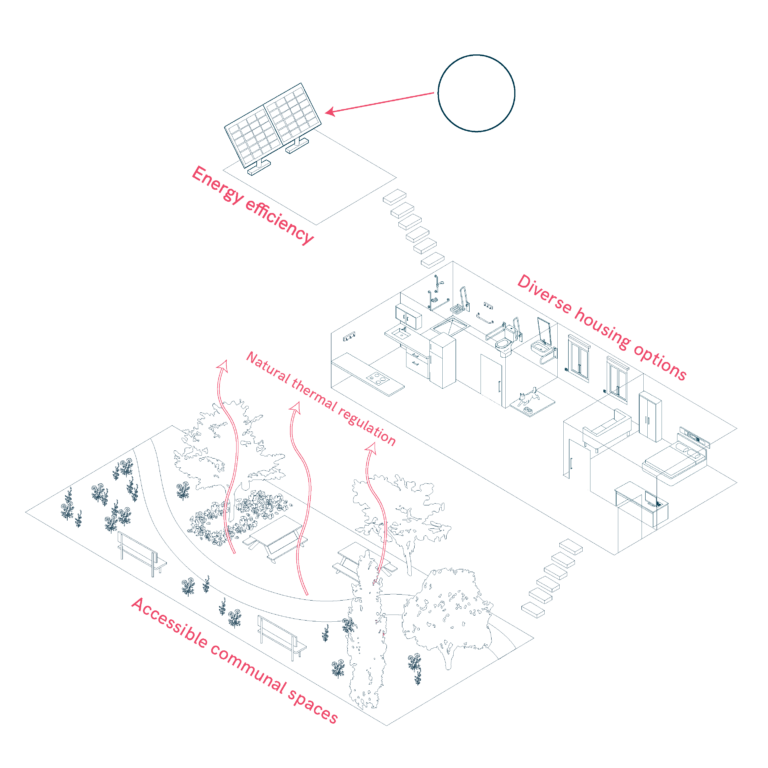
Social and Community Housing

Specialist Areas and Medical Equipment
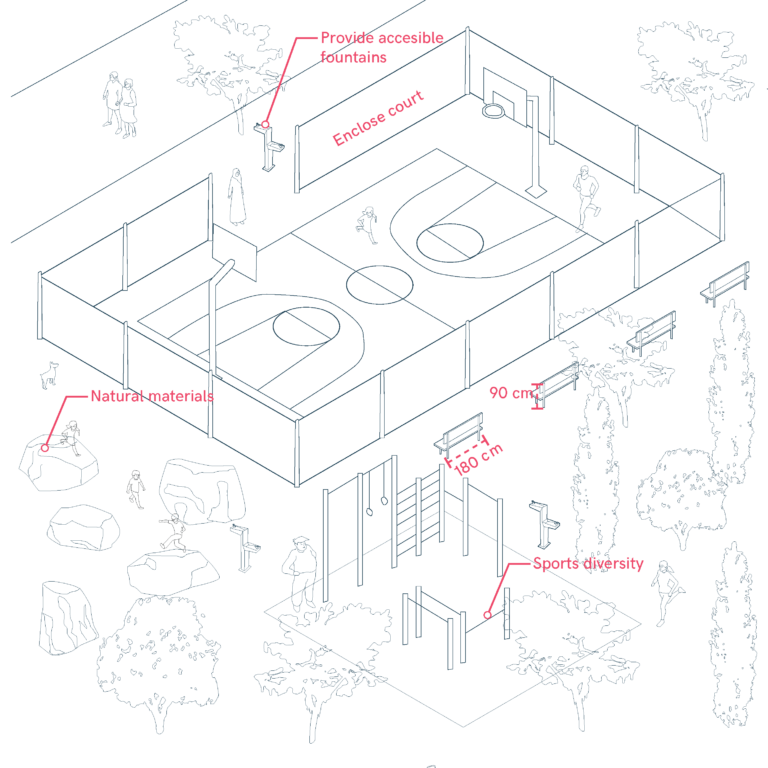
Sporting and Recreational Facilities
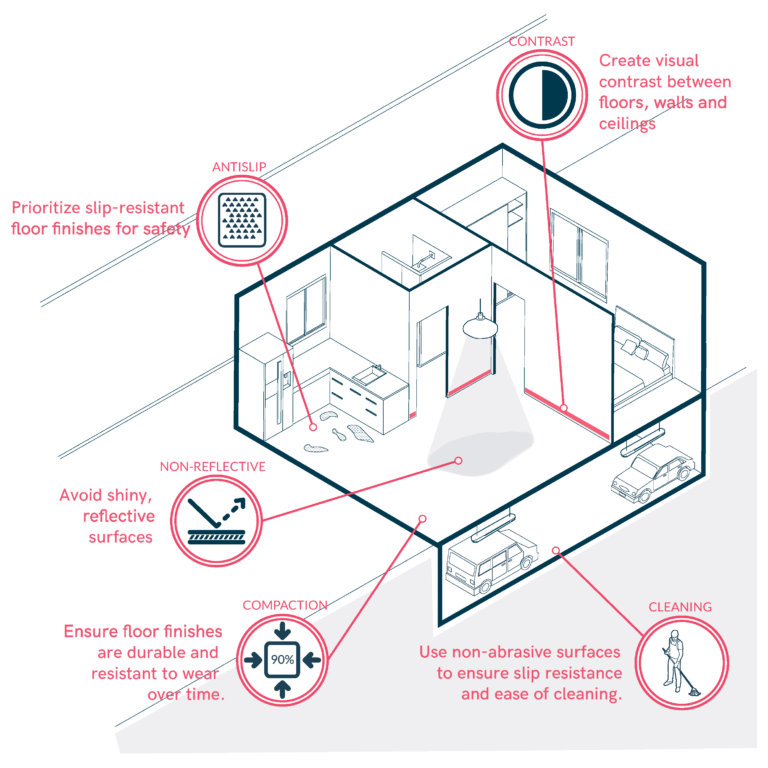
Surface Finishes
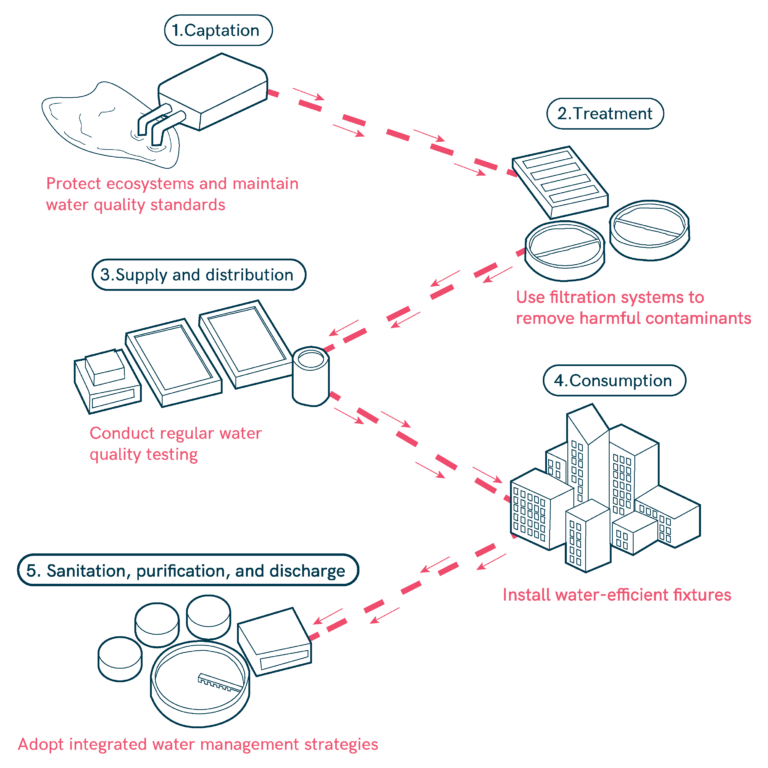
Sustainable and Efficient Water Systems

Sustainable and Resilient School Streets
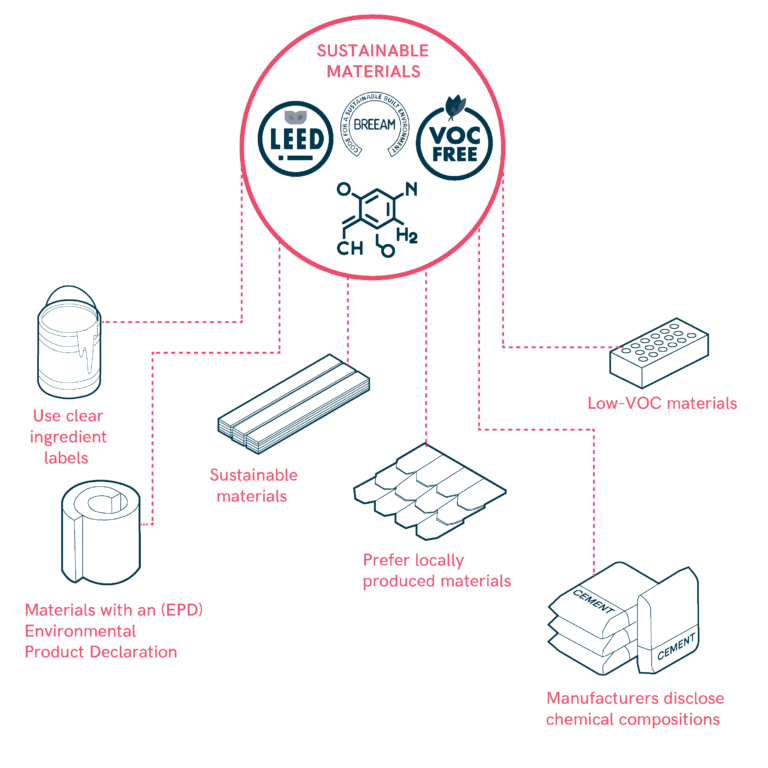
Sustainable Materials
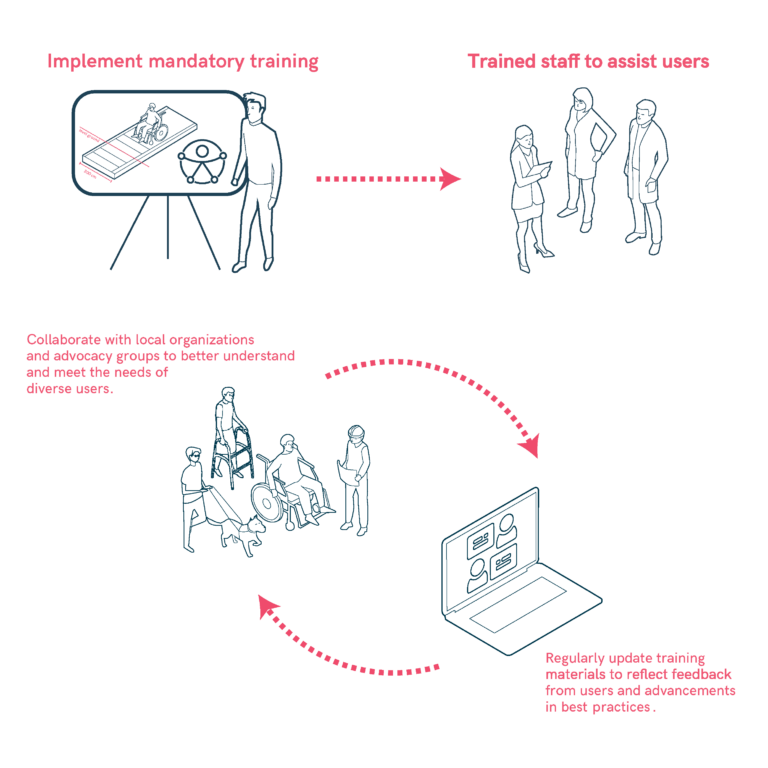
Training and Education
